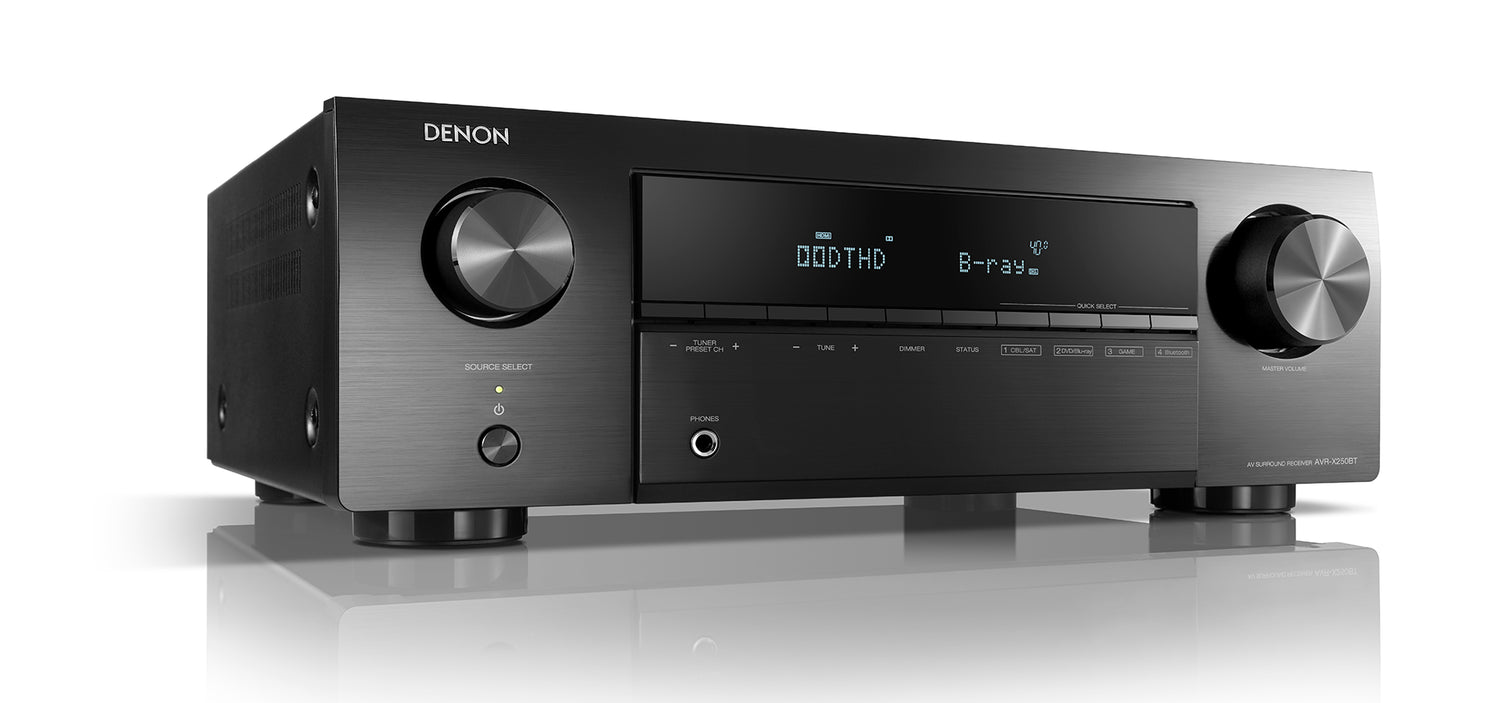The definitive list of home theater equipment
A home theater's main goal is to deliver a captivating audiovisual experience. A 32-inch LED/LCD TV with a soundbar or a home theater system in a box can be all you need for a home theater setup. If you'd like more, there are a few alternatives that can be customized to fit your needs and preferences, though. Here are all the things you should think about while organizing a home theater system.
Home Theater Room Setup
The ideal size and kind of video display device (TV or projector) depends on the dimensions of the room. No matter how big or little your room is, you should also think about the following:
What is the amount of ambient light? Ambient light on TVs can cause surface reflection or screen glare. Ambient light can cause a washed-out image on video projectors.
Does the room have carpeting or not? This has an impact on the distribution of sound in the listening region, particularly bass. Because hard flooring reflect more light, there may be undesired echoes and uneven bass. Unwanted audio artifacts are more easily absorbed via carpeted floors.
What type of wall construction do you have? Drywall is better than wood paneling as it is less reflective, but it can still cause undesirable vibration. To reduce vibrations, you may need to employ acoustic treatments.
Will you be storing the parts of your home cinema system in a closet or cabinet? How you want the room to look influences where and how you put your components.
Will you be placing speakers within the room, in the wall, or on the ceiling? Whether ceiling or in-wall speakers are more feasible depends on room acoustics and what surround sound formats will be most regularly employed.
Where will you be sitting in relation to the screen? This establishes the appropriate screen size for the greatest visual experience.
TV or Video Projector
The screen is the most crucial component of a home theater setup. These are your options:
LED/LCD or OLED television. TVs with resolutions of 720p, 1080p, or 4K Ultra HD are available for you to choose from. However, TVs with screen sizes larger than 40 inches are rarely offered in 720p and 1080p. The most widely accessible option over that size is 4K Ultra HD.
a combined screen and projector for videos. Video projectors can provide an experience of watching on a real big screen. You may choose between 720p, 1080p, and 4K resolutions, just like with TVs. Additionally, there are short-throw projectors designed specifically for tiny spaces. Since installing a projector requires unique lighting concerns, you should be able to completely darken the space.
It is important to position your screen at eye level; whereas televisions can be positioned on a range of stands, projectors naturally display most of their content on wall screens. Those have a maximum weight of 130 pounds and a maximum width of 48 inches (sometimes greater). The majority have heights appropriate for lounging on couches.
Home Theater Receiver or Preamp/Amp Combination
An integral part of home theater receivers is surround sound systems. The following features are combined with home theater receivers:
An AM/FM, HD, and satellite radio tuner.
A preamplifier that manages the selection of audio and video sources. After that, it processes the incoming audio signals and sends them to the appropriate amplifier channels as well as the subwoofer output. Video signals from source devices (such a DVD player) can also be routed by the preamp in an AV receiver and sent toward the TV.
an integrated multi-channel amplifier (5.1, 6.1, 7.1, or more channels) that provides the speaker system with surround sound signals.
Many high-end home theater systems use different components to perform the duties of a receiver. More versatility is offered by a preamplifier/amplifier combo, which also helps to isolate interference brought on by all of these functions sharing a single box and power supply. A home theater receiver will, however, function flawlessly for the majority of customers.

Speakers
Speakers should be taken into account next. Listen to a variety of speakers and settings before making a purchase. Front-left/right, center-channel, and left/right surround speakers are required for a five-channel arrangement. For a better acoustical match between components in your home theater, try to get speakers of the same brand and similar model.
The Subwoofer
A subwoofer is a type of specialist loudspeaker used to mimic the very low frequencies heard in films and music. Which subwoofer is best for you depends on the room's size and whether or not it has carpet. After obtaining your audio equipment, you must properly arrange your subwoofer and speakers.

Source Components
If you can't watch movies or listen to music on your home theater system, what good is it? The following is a list of the necessary source components:
DVD player: To guarantee the greatest possible image on an HDTV, if you're going to purchase a stand-alone DVD player, be sure it has progressive scan and upscaling capabilities.
Blu-ray player: A Blu-ray Disc player gives you access to original, high-definition media. It can also be used to play audio CDs and regular DVDs.
Ultra HD Blu-ray Disc player: An Ultra HD Blu-ray Disc player is an additional source component choice to think about if you have a 4K Ultra HD TV. These players offer a true-4K resolution when playing Ultra HD Blu-ray discs for an Ultra HD TV. Every Ultra HD Blu-ray Disc player supports 4K upscaling and can play both standard and DVD discs.
CD player: You might not need a standalone CD player because CDs can be played on any DVD, Blu-ray, and Ultra HD Blu-ray players.
Turntable: A lot of home theater receivers have inputs for a phono/turntable because vinyl records are becoming more and more popular.
Choose between an antenna, cable, or satellite to receive your main TV shows. If you decide to sign up for a cable or satellite subscription, think about getting a DVR along with the service.
Internet streaming device: A media streamer such as the Roku allows you to view movies online if you have fast internet access. A growing number of smart TVs and Blu-ray Disc players are internet-enabled and can stream video material from well-known providers like Netflix, VUDU, Amazon, and Hulu.
DVD/VHS recorders: If your home theater system is equipped with a HiFi Stereo unit, you can connect your VCR to it. A DVD recorder or a DVD recorder/VCR combo can be included. But hurry, these are becoming harder to find, so get one while you can.
Power conditioner or surge protector
The unsung heroes of a home entertainment system are the surge protectors. Adding some kind of surge protection to your system is a good idea, even though these devices aren't infallible. You never know when your system can be impacted by an unexpected brownout or power loss. Think about using a power conditioner to track and manage your power consumption.
Cables for connections and speaker wire
Without connectivity, a home entertainment system is not possible. Every cable needs to be the appropriate kind and length. Make sure the colors on the cable ends match the connections on your components if the connections are color-coded.
Depending on how far apart the speakers are from the amplifier or AV receiver, the gauge of the speaker cable may matter. Speaker wire with a gauge of 16 or 14 works best; 18 gauge is extremely thin and should not be used for lengthy distances.
Options for Remote Control
It could be confusing to have separate remotes for each component, so you should acquire a universal remote instead. Using a mobile remote control app, you may operate your home theater from your phone as well. While some apps are restricted to certain brands, others function with a variety of product models and brands. Voice control with Google Assistant and Alexa on Google Home and Amazon Echo smart speakers is an additional choice.
Furnishings for Home Theaters
You need a location to store your components now that you have an elaborate home theater setup. Additionally, you might want to spend some money on cozy home theater furniture.
Will You Hire a Professional or Install It Yourself?
We Home Theatre Experts Store Here To help you out
For More Expertise Call us Today : +91 8398887775 +919350052954
When organizing a home cinema, there are a few typical pitfalls to steer clear of. Make sure the parts are compatible before assembling a home theater from separate components. To ensure you have adequate room for everything you need, you should also measure your room before you enter. Before you begin, thoroughly investigate the cost of any structural changes you believe the room requires.
Seek the assistance of a qualified home theater installer if you are planning a luxurious bespoke home theater or if you are finding that you are taking on more than you can handle. Considering your financial constraints, the installer might offer helpful recommendations for parts or installation techniques that can optimize the space in your room.
Checkout Our Collection : Av Receivers


